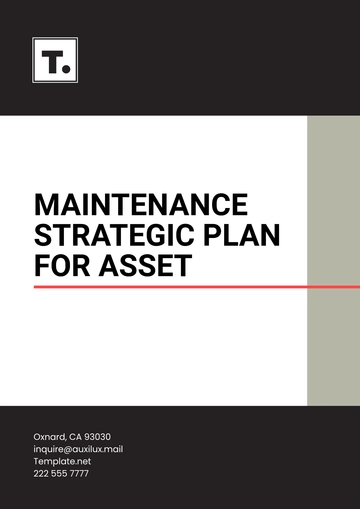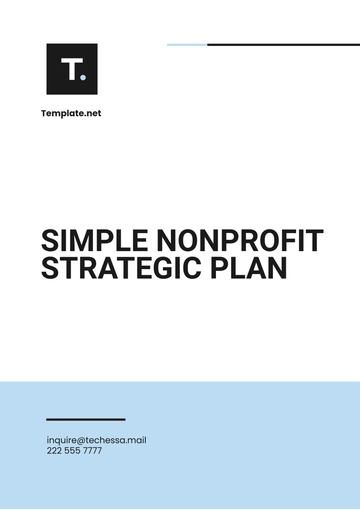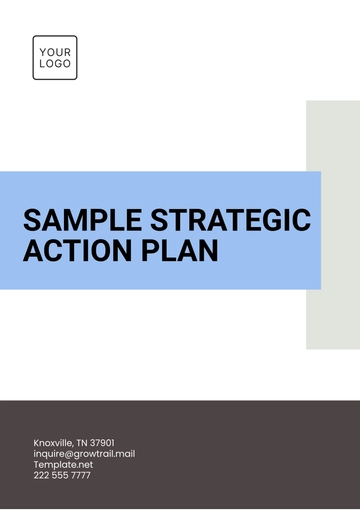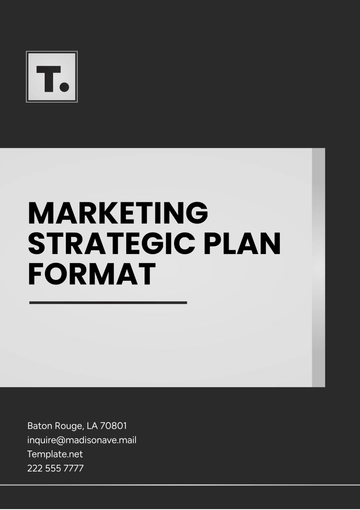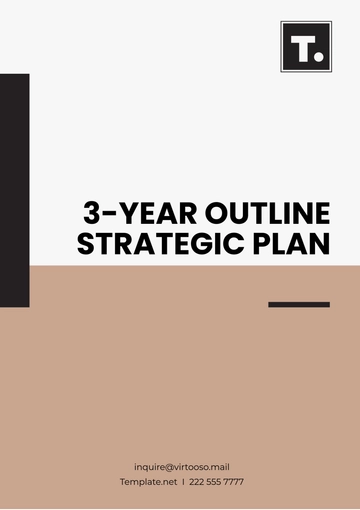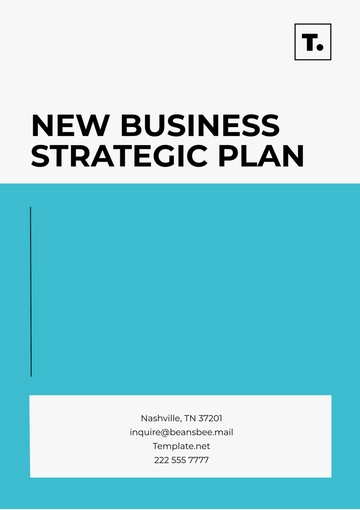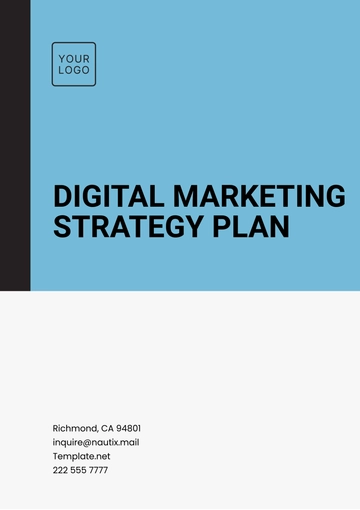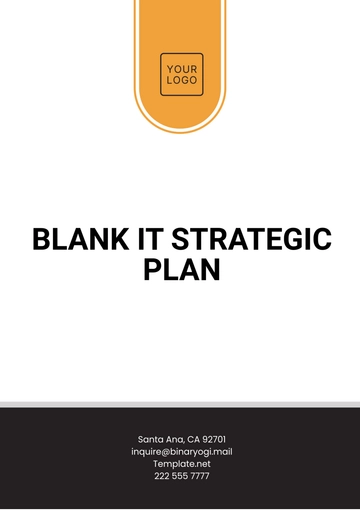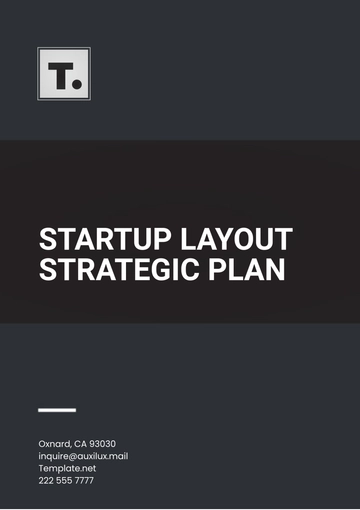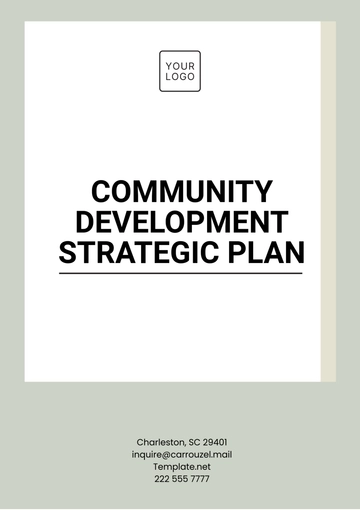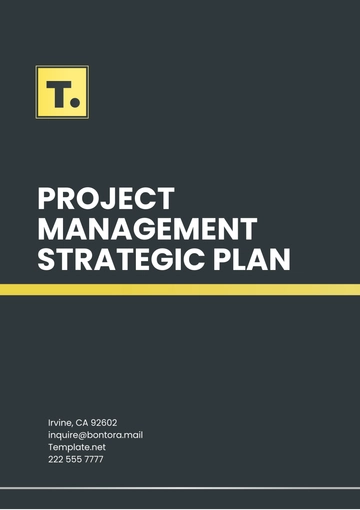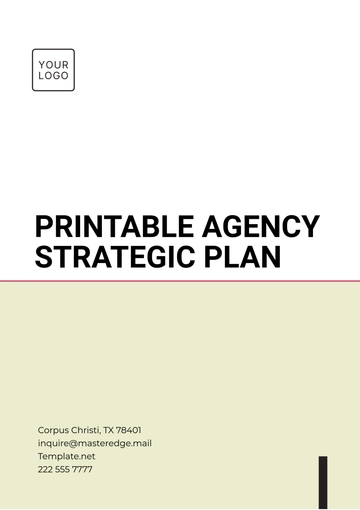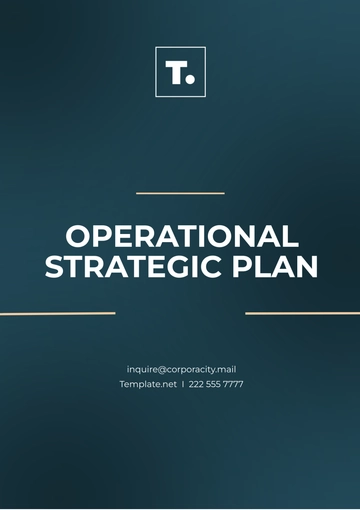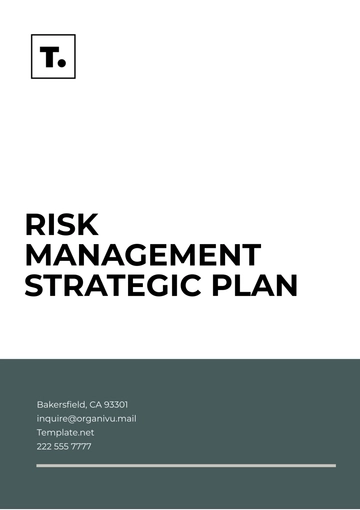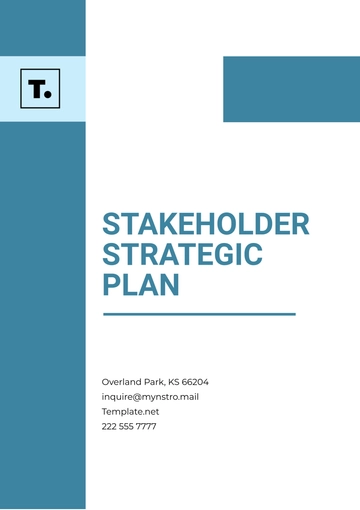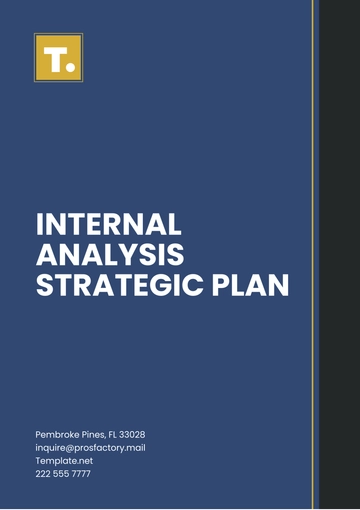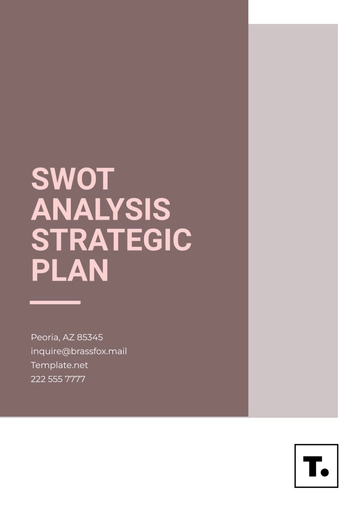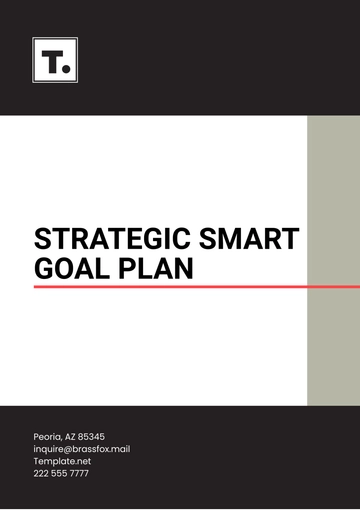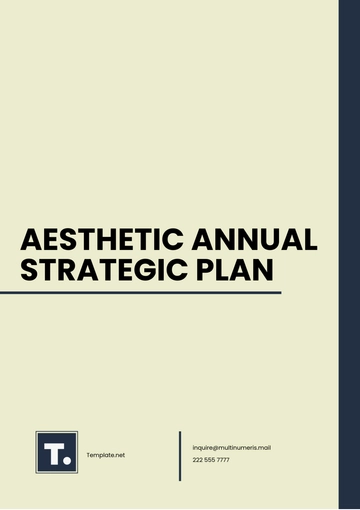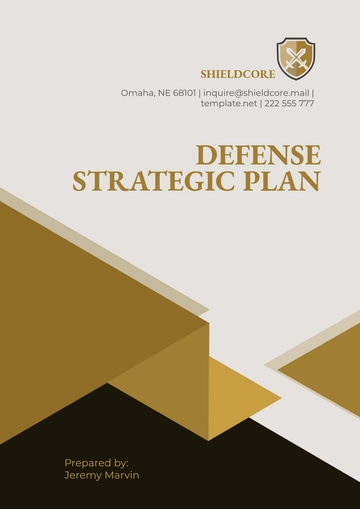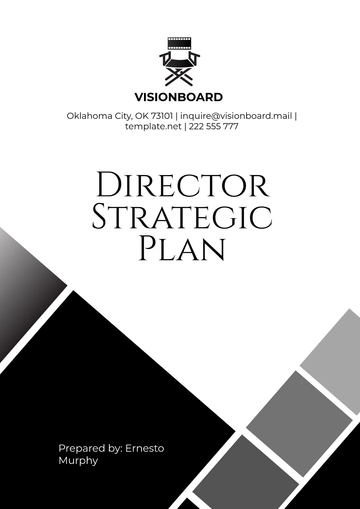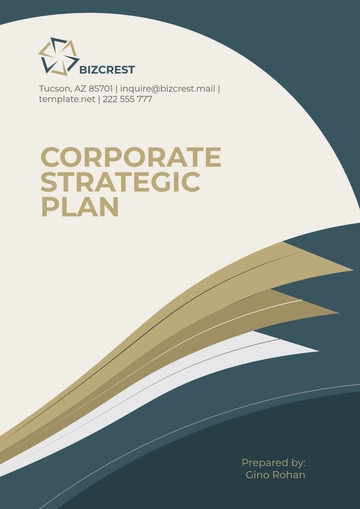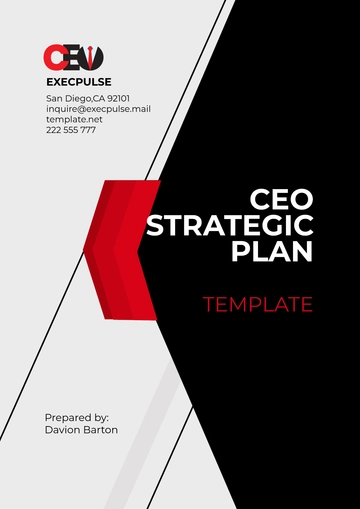Free Restaurant Strategic Plan
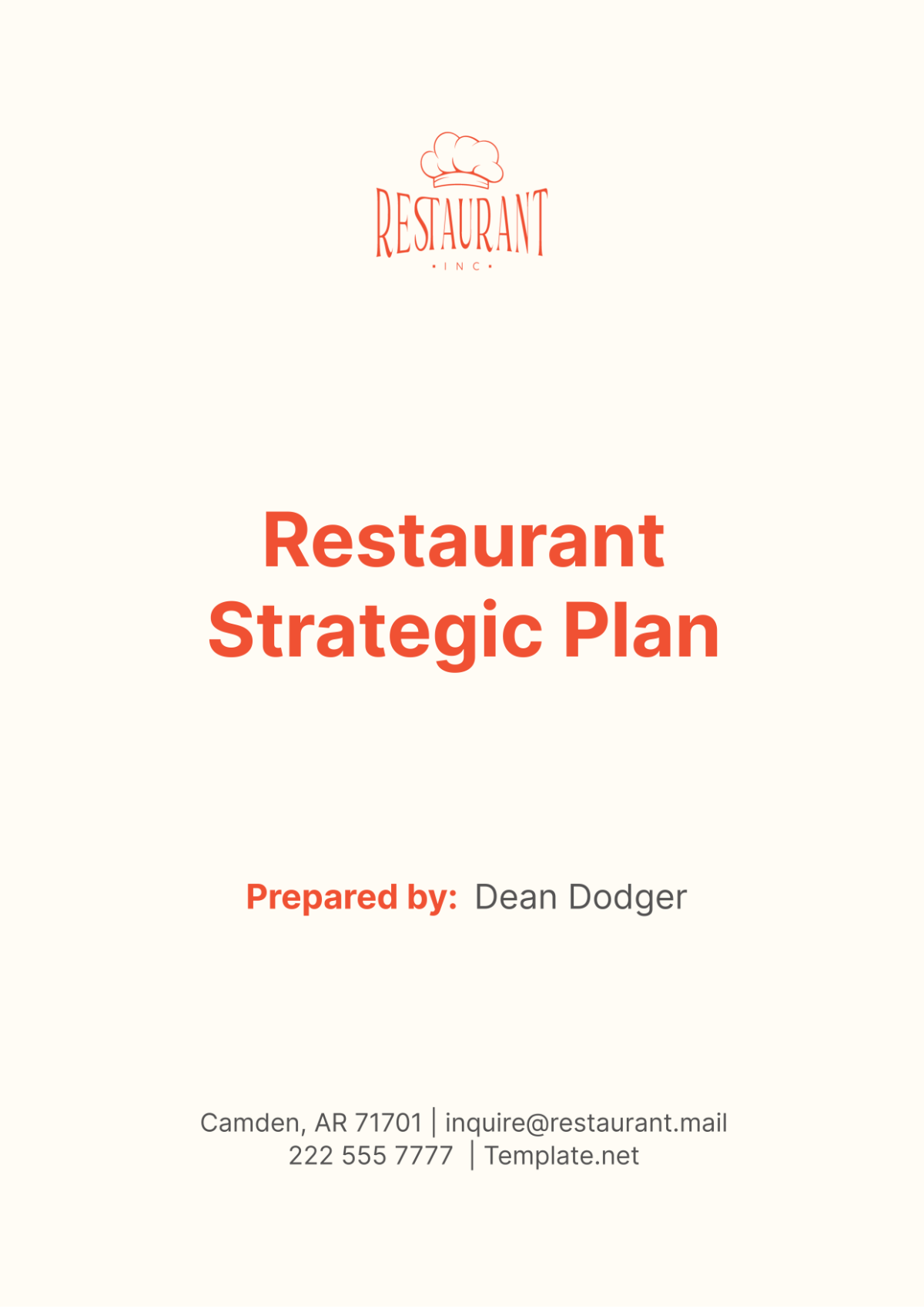
I. Executive Summary
A. Mission Statement
[Your Company Name] is dedicated to delivering an unparalleled dining experience by offering an innovative menu crafted from the finest, freshest ingredients. We are committed to delighting every guest with exceptional service, culinary excellence, and a warm, welcoming atmosphere.
B. Vision Statement
By 2050, [Your Company Name] will be a premier restaurant chain known for its culinary creativity, sustainable practices, and outstanding customer service. Our vision is to expand nationally and be the go-to dining destination in every major city.
C. Core Values
Quality: We are committed to using the highest quality ingredients and delivering superior food and service.
Customer Focus: Our guests' satisfaction is our top priority.
Innovation: We continuously seek to improve and innovate our menu and services.
Sustainability: We prioritize environmentally friendly practices in all aspects of our business.
Teamwork: We foster a supportive, inclusive, and collaborative work environment.
D. Business Objectives
Increase Revenue: Achieve an annual revenue growth of [10%].
Expand Market Reach: Open [10] new locations over the next [5] years.
Enhance Customer Experience: Maintain a customer satisfaction score above [90%].
Improve Profit Margins: Increase net profit margins by [5%] within [3] years.
Sustainability Goals: Reduce carbon footprint by [20%] within [5] years.
II. Market Analysis
A. Industry Overview
The restaurant industry is poised for steady growth, driven by evolving consumer preferences, increased disposable incomes, and a growing interest in diverse culinary experiences. The industry is expected to grow at a compound annual growth rate (CAGR) of [3%] from [2050] to [2055].
Metric | 2050 | 2055 (Projected) |
|---|---|---|
Market Size (USD) | 900 billion | 1.5 trillion |
CAGR | - | 3% |
Number of Establishments | 1 million | 1.3 million |
B. Target Market
Our target market includes urban and suburban residents with a preference for high-quality dining experiences. We aim to attract the following demographic and psychographic segments:
Demographics:
Age: 25-45 years old
Income: $50,000+ annually
Education: College-educated
Location: Urban and suburban areas
Psychographics:
Lifestyle: Busy professionals, food enthusiasts, and families
Preferences: Premium ingredients, diverse and innovative menu options, excellent service
Segment | Age Range | Income Range | Key Preferences |
|---|---|---|---|
Young Professionals | 25-35 | $50,000-$80,000 | Quick service, trendy menu items |
Established Families | 35-45 | $80,000-$150,000 | Family-friendly, variety in menu, health-conscious |
Food Enthusiasts | 25-45 | $60,000+ | Unique culinary experiences, gourmet options |
C. Competitive Analysis
We have identified three primary competitors in our market:
1. Competitor A
Strengths: Strong brand recognition, diverse menu options, widespread marketing presence
Weaknesses: Higher price point, limited geographical locations
2. Competitor B
Strengths: Affordable pricing, extensive location network, strong customer loyalty
Weaknesses: Inconsistent food quality, limited menu variety
3. Competitor C
Strengths: Unique dining experience, innovative culinary offerings, high customer satisfaction
Weaknesses: Higher operational costs, niche market focus
D. SWOT Analysis
Strengths
High-quality ingredients sourced locally
Exceptional customer service with trained staff
Experienced management team with industry expertise
Weaknesses
High operational costs due to premium ingredients
Limited market presence currently confined to a few locations
Dependence on specific suppliers for key ingredients
Opportunities
Expansion into new markets with high growth potential
Growing demand for food delivery and online ordering services
Partnership opportunities with local businesses and events
Threats
Intense competition from established restaurant chains
Economic downturns affecting consumer spending
Changing consumer preferences and dietary trends
SWOT Analysis | Internal Factors | External Factors |
|---|---|---|
Strengths | High-quality ingredients, exceptional service, experienced management | |
Weaknesses | High operational costs, limited market presence, supplier dependence | |
Opportunities | Market expansion, food delivery demand, local partnerships | |
Threats | Intense competition, economic downturns, changing consumer preferences |
III. Strategic Objectives
A. Short-term Goals (1-2 years)
Increase Brand Awareness: Launch targeted marketing campaigns to boost brand visibility and recognition.
Expand Menu Offerings: Introduce more vegan and gluten-free options to cater to diverse dietary needs.
Customer Loyalty Program: Develop and implement a loyalty program to incentivize repeat visits and enhance customer retention.
Operational Efficiency: Streamline operations to reduce costs by [10%] through process improvements and technology integration.
B. Long-term Goals (3-5 years)
New Location Openings: Establish [5] new restaurant locations in key metropolitan areas to expand market reach.
Revenue Growth: Achieve a [20%] increase in annual revenue by focusing on new customer acquisition and retention strategies.
Mobile App Development: Create and launch a user-friendly mobile app for online ordering, delivery, and customer engagement.
Sustainability Certification: Obtain industry certification for sustainable practices and reduce environmental impact.
IV. Marketing Strategy
A. Branding
Our branding strategy will emphasize our commitment to quality, sustainability, and culinary innovation. We will highlight our unique menu offerings and exceptional dining experience to attract and retain customers.
B. Marketing Channels
Digital Marketing:
Social Media: Engage customers on platforms such as Facebook, Instagram, and Twitter with regular updates, promotions, and interactive content.
Search Engine Optimization (SEO): Optimize our website to rank higher in search engine results and drive organic traffic.
Email Marketing: Send targeted email campaigns to inform customers about new menu items, promotions, and events.
Traditional Marketing:
Local Radio and Print Advertisements: Run ads in local newspapers, magazines, and radio stations to reach a broader audience.
Community Sponsorships: Sponsor community events and local sports teams to build brand awareness and goodwill.
Business Partnerships: Partner with local businesses for cross-promotions and special events.
C. Promotional Strategies
Launch Promotions:
Host grand opening events for new locations with special offers and discounts to attract initial customers.
Offer limited-time promotions on new menu items to generate excitement and trial.
Customer Engagement:
Develop a loyalty program that rewards repeat visits with points that can be redeemed for discounts or free items.
Introduce seasonal menu items and special promotions to keep the dining experience fresh and exciting.
D. Budget Allocation
Marketing Activity | Annual Budget [$0,000] |
|---|---|
Digital Marketing | 60 |
Traditional Marketing | 25 |
Promotional Campaigns | 15 |
Total | 100 |
V. Operations Plan
A. Location and Facilities
Current Locations:
Location A: 123 Main St, City, State, Zip
Location B: 456 Elm St, City, State, Zip
Future Locations:
Location C: 789 Maple Ave, City, State, Zip
B. Staffing
Current Staff:
Managers: 5
Chefs: 10
Servers: 20
Support Staff: 15
Future Staffing Needs:
Increase staff by [25%] to support new locations and extended hours.
C. Operational Workflow
Food Preparation:
Standardized recipes and procedures to ensure consistency and quality across all locations.
Regular training sessions for kitchen staff to maintain high standards.
Customer Service:
Comprehensive training programs focused on delivering exceptional service.
Regular customer feedback collection and analysis to identify areas for improvement.
Supply Chain Management:
Establishing relationships with multiple reliable suppliers to ensure a steady supply of fresh ingredients.
Implementing inventory management systems to minimize waste and optimize ordering processes.
VI. Financial Plan
A. Revenue Projections
Year | Projected Revenue [$0,000] |
|---|---|
2050 | 1,200 |
2051 | 1,400 |
2052 | 1,700 |
2053 | 2,000 |
2054 | 2,300 |
B. Expense Projections
Expense Category | Annual Expense [$0,000] |
|---|---|
Food and Beverage | 500 |
Salaries and Wages | 350 |
Marketing | 100 |
Rent and Utilities | 150 |
Miscellaneous | 70 |
Total | 1,170 |
C. Profit and Loss Statement
Year | Total Revenue [$0,000] | Total Expenses [$0,000] | Net Profit [$0,000] |
|---|---|---|---|
2050 | 1,200 | 1,170 | 30 |
2051 | 1,400 | 1,250 | 150 |
2052 | 1,700 | 1,320 | 380 |
2053 | 2,000 | 1,400 | 600 |
2054 | 2,300 | 1,500 | 800 |
D. Break-even Analysis
The break-even point is projected at [$1,100,000] in annual revenue, which corresponds to selling approximately [55,000] meals per year at an average price of [$20].
VII. Monitoring and Evaluation
A. Key Performance Indicators (KPIs)
Customer Satisfaction Score: Target 90%
Revenue Growth Rate: Target 15% annually
Employee Retention Rate: Target 85%
Cost of Goods Sold (COGS): Maintain below 40% of revenue
B. Evaluation Methods
Monthly Financial Reviews:
Conduct detailed analyses of revenue, expenses, and profitability to identify trends and areas for improvement.
Customer Feedback:
Regularly collect and analyze customer feedback through surveys and review platforms to measure satisfaction and identify areas for improvement.
Staff Performance Reviews:
Conduct quarterly performance reviews for all staff members to assess performance, provide feedback, and identify training needs.
Market Analysis:
Perform annual reviews of industry trends and competitive landscape to stay informed and adjust strategies accordingly.
VIII. Risk Management
A. Potential Risks
Economic Downturn:
Impact: Decreased consumer spending on dining out.
Mitigation: Diversify revenue streams with delivery and catering services and adjust menu pricing strategies.
Supply Chain Disruptions:
Impact: Shortages or increased costs of key ingredients.
Mitigation: Establish multiple supplier relationships, maintain inventory buffers, and explore local sourcing options.
Health and Safety Issues:
Impact: Potential closures or reduced customer confidence.
Mitigation: Strict adherence to health and safety regulations, regular staff training, and transparent communication with customers.
B. Contingency Plans
Financial Reserves:
Maintain a reserve fund to cover [6] months of operating expenses to ensure financial stability during unforeseen circumstances.
Crisis Management Team:
Develop a dedicated team responsible for responding to emergencies, implementing recovery plans, and ensuring business continuity.
- 100% Customizable, free editor
- Access 1 Million+ Templates, photo’s & graphics
- Download or share as a template
- Click and replace photos, graphics, text, backgrounds
- Resize, crop, AI write & more
- Access advanced editor
Plan for success with Template.net's Restaurant Strategic Plan Template. This customizable document provides a comprehensive framework for outlining your restaurant's long-term goals, strategies, and action plans. Cover areas such as market analysis, competitive positioning, marketing strategies, and financial projections. Editable in our Ai Editor Tool for seamless customization to fit your restaurant's unique strategic objectives and business vision.
